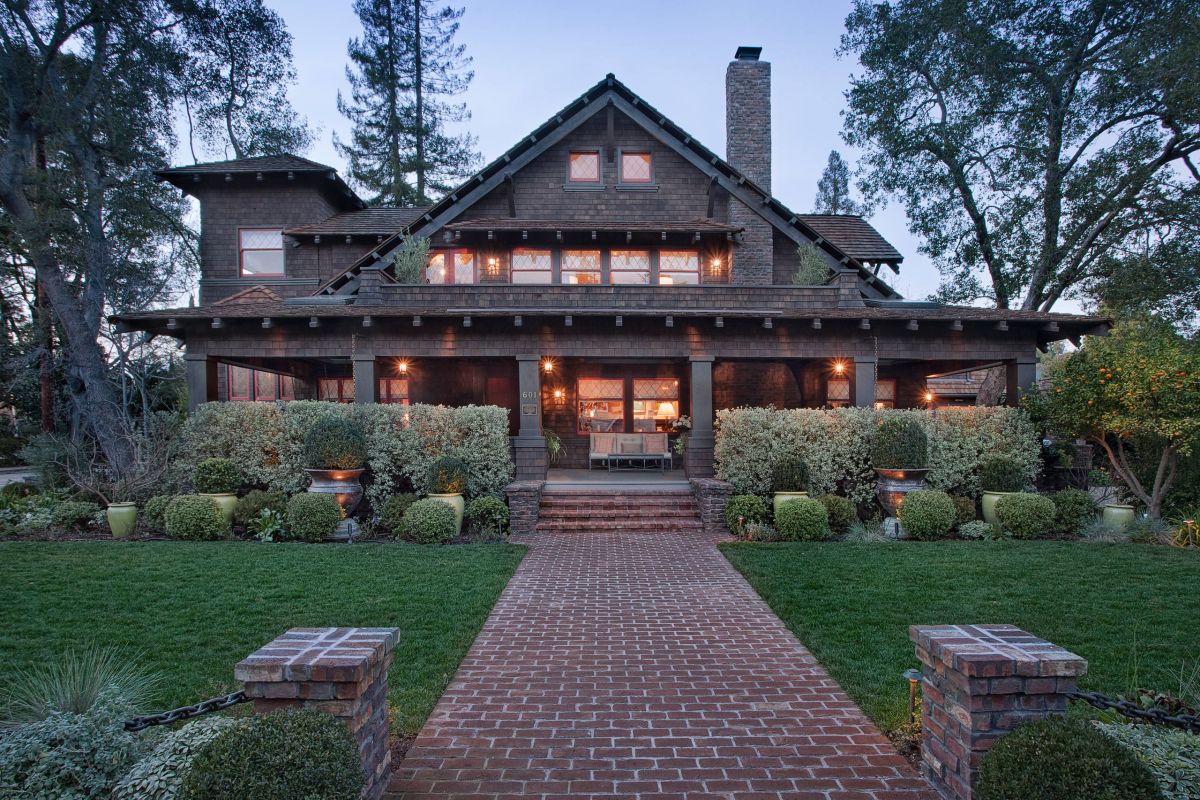

Articles
20 Craftsman-Style Homes With Timeless Charm
Modified: January 18, 2024
Discover 20 captivating articles showcasing Craftsman-style homes, exuding timeless charm and architectural beauty. Explore designs, features, and tips for achieving this iconic aesthetic.
(Many of the links in this article redirect to a specific reviewed product. Your purchase of these products through affiliate links helps to generate commission for Storables.com, at no extra cost. Learn more)
Introduction
The Craftsman-style home, also known as the Arts and Crafts style, is a popular architectural design that emerged in the late 19th century and gained significant popularity during the early 20th century. With its emphasis on simplicity, craftsmanship, and natural materials, Craftsman-style homes continue to be a timeless choice for homeowners seeking a blend of classic charm and modern functionality.
In this article, we will explore the history, characteristics, and design principles of Craftsman-style homes. We will also take a closer look at various interior and exterior features that make these homes so appealing, along with stunning examples that showcase their enduring beauty.
Whether you’re a fan of the Craftsman style or simply looking for inspiration for your own home, read on to discover the unique elements that define these remarkable architectural gems.
Key Takeaways:
- Craftsman-style homes embody timeless charm through their craftsmanship, connection to nature, and seamless blend of traditional design with modern upgrades, creating warm, inviting, and harmonious living environments for generations to come.
- Whether in urban, suburban, or rural settings, Craftsman-style homes bring character, individuality, and a sense of historical context, enhancing their surroundings and fostering strong communities while embracing the beauty of the natural world.
Read more: What Is A Craftsman Style Table?
The History of Craftsman-Style Homes
The Craftsman style originated in the United States in the late 19th century as a reaction against the ornate and extravagant Victorian architecture that dominated the era. The movement was led by prominent American architect Gustav Stickley, who sought to promote a return to simplicity and the use of natural materials.
Stickley published a magazine called “The Craftsman,” which became a platform for promoting Craftsman-style design principles. His vision resonated with a growing middle class seeking homes that were practical, functional, and aesthetically pleasing.
The Craftsman style gained popularity during the Arts and Crafts movement, which emphasized craftsmanship and skillful handiwork. The movement advocated for handmade goods as a response to mass production and the devaluation of craftsmanship.
Craftsman-style homes were known for their low-pitched roofs, wide eaves with exposed rafters, and front porches with tapered columns or pedestals. The exteriors often featured natural materials such as wood, stone, and brick, showcasing the beauty of the materials in their natural state.
The interior of Craftsman-style homes reflected the same principles of simplicity and functionality. They featured open floor plans, built-in cabinetry, and a focus on natural light. With their emphasis on quality craftsmanship and attention to detail, these homes became highly sought after.
While the popularity of the Craftsman style waned in the mid-20th century, it experienced a revival in the late 20th century as homeowners sought homes with character, charm, and a connection to nature. Today, Craftsman-style homes continue to be admired for their timeless appeal and enduring architectural integrity.
Characteristics of Craftsman-Style Homes
Craftsman-style homes are known for their distinctive features that set them apart from other architectural styles. Here are some of the key characteristics that define Craftsman-style homes:
- Low-Pitched Roof: Craftsman-style homes typically have a low-pitched roof with wide, overhanging eaves. This design feature adds to the overall horizontal emphasis of the style.
- Wide Eaves with Exposed Rafters: The eaves of Craftsman-style homes extend beyond the facade, revealing exposed rafters. This architectural detail contributes to the visual appeal and reinforces the emphasis on craftsmanship.
- Front Porch: Craftsman-style homes often feature a welcoming front porch adorned with tapered columns or pedestals. The porch serves as an inviting space for relaxation and socializing.
- Natural Materials: Craftsman-style homes highlight the beauty of natural materials. Wood, stone, and brick are commonly used in both the exterior and interior, adding a sense of warmth and authenticity.
- Open Floor Plan: Craftsman-style homes typically feature an open layout, with interconnected living spaces that flow seamlessly into one another. This design promotes a sense of spaciousness and facilitates easy movement.
- Built-In Cabinetry: Craftsman-style homes often incorporate built-in cabinetry, such as bookcases, window seats, and display shelves. These carefully crafted elements add both functionality and visual interest to the interior.
- Abundance of Natural Light: Craftsman-style homes prioritize natural light, with large windows that let in plenty of sunlight. This design choice creates a bright and airy atmosphere.
- Emphasis on Craftsmanship: The Craftsman style celebrates craftsmanship and the use of handcrafted details. From intricate woodwork to artistic tilework and stained glass windows, Craftsman-style homes showcase the skill and artistry of the craftsmen.
These characteristics collectively contribute to the distinctive charm and timeless appeal of Craftsman-style homes. They embody a sense of craftsmanship, simplicity, and a connection to nature that continues to resonate with homeowners today.
Craftsman Architecture and Design Principles
Craftsman architecture is grounded in a set of design principles that prioritize simplicity, functionality, and the use of natural materials. These principles guide the construction and aesthetic choices of Craftsman-style homes. Here are some key design principles that define Craftsman architecture:
- Simplicity: Craftsman-style homes embrace a simplistic design philosophy. Clean lines, uncluttered spaces, and minimal ornamentation are hallmarks of this architectural style.
- Horizontal Emphasis: Craftsman homes are characterized by a strong horizontal emphasis. This is achieved through the use of low-pitched roofs, wide eaves, and long, extended porches, which create a sense of visual balance and harmony.
- Integration with Nature: Craftsman-style homes aim to create a harmonious relationship with their natural surroundings. This is achieved through the use of natural materials, ample windows to let in sunlight, and an open floor plan that connects indoor and outdoor spaces.
- Quality Craftsmanship: Craftsmanship is highly valued in Craftsman architecture. Attention to detail, skillful execution of woodwork, stonework, and other architectural elements, and the use of handcrafted details showcase the high level of craftsmanship associated with this style.
- Functional Layout: Craftsman-style homes prioritize function and practicality. The open floor plan allows for easy movement and social interaction, while built-in cabinetry and storage solutions maximize space efficiency.
- Expressive Details: Craftsman architecture is known for its expressive details that add character and visual interest. This includes decorative woodwork, stained glass windows, unique light fixtures, and artistic tilework.
- Emphasis on Natural Materials: Craftsman-style homes highlight the beauty of natural materials. Wood, stone, brick, and other natural materials are skillfully incorporated into the design to create a warm and inviting atmosphere.
By adhering to these design principles, Craftsman-style homes achieve a harmonious balance between functionality, craftsmanship, and aesthetics. The result is a timeless architectural style that continues to captivate homeowners with its enduring charm and connection to nature.
Interior Design Elements in Craftsman-Style Homes
The interior design of Craftsman-style homes reflects the same principles of simplicity, craftsmanship, and natural elements that are prevalent in their architectural design. Here are some key interior design elements that are commonly found in Craftsman-style homes:
- Woodwork: Craftsman-style homes are known for their exquisite woodwork. From intricately carved moldings to built-in cabinetry, woodwork adds warmth, character, and a sense of craftsmanship to the interior.
- Fireplace: A focal point in many Craftsman-style homes is the fireplace. Often made of stone or brick and surrounded by built-in bookcases or shelving, the fireplace adds coziness and a sense of comfort to the space.
- Built-In Cabinetry: Craftsman-style homes feature built-in cabinetry throughout the interior. From display cabinets in the living room to built-in seating with storage in the dining area, these built-ins add functionality while maintaining the overall aesthetic of the home.
- Stained Glass: Craftsman-style homes often incorporate stained glass windows as decorative elements. These windows add a touch of color and artistic flair to the interior while allowing natural light to filter through.
- Exposed Beams: Exposed beams are a defining feature of Craftsman-style homes. Whether in the living room, dining room, or kitchen, exposed beams add architectural interest and a sense of rustic charm to the space.
- Natural Colors and Materials: The color palette of Craftsman-style homes typically consists of earth tones and nature-inspired hues. Natural materials such as wood, stone, and clay tiles are used to create a warm and inviting environment.
- Artistic Tilework: Craftsman-style homes often feature artistic tilework, especially in areas such as kitchens, bathrooms, and entryways. From intricate mosaic patterns to hand-painted tiles, these elements add visual interest and a touch of artistry to the space.
- Open Floor Plan: Craftsman-style homes are known for their open floor plans that allow for seamless flow and connection between different living spaces. This design feature promotes a sense of spaciousness and facilitates social interaction.
These interior design elements combine to create a warm, inviting, and visually appealing environment within Craftsman-style homes. The attention to detail, use of natural materials, and emphasis on craftsmanship contribute to the overall charm and timeless appeal of these homes.
Read more: 18 Colonial-Style Homes With Enduring Charm
Exterior Features of Craftsman-Style Homes
The exterior of Craftsman-style homes is characterized by distinct architectural elements that contribute to their timeless appeal and charm. Here are some key exterior features commonly found in Craftsman-style homes:
- Low-Pitched Roof: Craftsman-style homes typically feature a low-pitched roof with multiple gables. This roof style adds to the horizontal emphasis and overall balanced appearance of the home.
- Wide Eaves: Craftsman homes are known for their wide eaves that extend beyond the walls of the house. These overhanging eaves provide shade, protection from the elements, and a visual connection between the interior and exterior spaces.
- Tapered Columns: The front porch of a Craftsman-style home often showcases tapered columns or pedestals. These columns, which are usually made of wood or stone, add elegance and create a sense of verticality to the overall design.
- Exposed Rafters: One of the distinctive features of Craftsman-style homes is the presence of exposed rafters. These can be seen on the underside of the eaves and contribute to the overall aesthetic appeal by highlighting the craftsmanship of the construction.
- Front Porch: Craftsman-style homes are known for their inviting front porches. These porches often span the entire width of the house and are designed as social spaces that connect the homeowners with their neighbors and surroundings.
- Use of Natural Materials: Craftsman-style homes prioritize the use of natural materials in their exterior. This includes the use of wood, stone, brick, and stucco to showcase the beauty of these materials and to create a warm and welcoming facade.
- Panels and Shingles: Craftsman homes often feature decorative panels and shingles on both the exterior walls and gables. These architectural details add depth, texture, and visual interest to the facade.
- Multi-Pane Windows: Craftsman-style homes typically have multi-pane windows, often arranged in a symmetrical pattern. These windows, with their divided light design, add to the character and charm of the home while allowing natural light to flow in.
- Attention to Detail: Craftsman-style homes are characterized by their attention to detail. From decorative brackets and corbels to custom-made doorways and unique trim work, these homes showcase intricate craftsmanship and artistic flourishes.
These exterior features of Craftsman-style homes combine to create a visually appealing and architecturally distinctive appearance. The emphasis on natural materials, attention to detail, and harmonious design elements all contribute to the timeless charm of Craftsman-style homes.
Craftsman-Style Homes with Beautiful Woodwork
One of the defining characteristics of Craftsman-style homes is the exquisite woodwork found throughout the interior and exterior of these homes. Craftsman-style homes often showcase beautiful woodwork that adds warmth, character, and a sense of craftsmanship. Here are some of the ways that Craftsman-style homes incorporate stunning woodwork:
- Exterior Siding and Trim: Craftsman-style homes often feature wood siding and trim that exudes natural beauty. Whether it’s cedar, oak, or another type of hardwood, the wood siding adds texture and visual interest to the exterior of the home.
- Interior Trim and Moldings: Craftsman-style homes boast intricate trim work and moldings throughout the interior. From baseboards to crown moldings, these details highlight the craftsmanship and attention to detail that are synonymous with the Craftsman style.
- Built-In Cabinetry: Craftsman-style homes are known for their built-in cabinetry. From bookcases to china cabinets, these built-ins often feature handcrafted woodwork and provide both functionality and aesthetic appeal.
- Staircases and Railings: Crafted with precision and artistic detail, the staircases and railings in Craftsman-style homes showcase elaborate woodwork. These features become focal points within the home and demonstrate the craftsmanship sought after in this architectural style.
- Fireplace Mantels: Fireplaces in Craftsman-style homes are usually adorned with beautifully crafted wood mantels. From intricately carved designs to simple yet elegant lines, these mantels add a touch of sophistication and create a cozy ambiance in the living spaces.
- Exposed Beams and Ceiling Details: Craftsman-style homes often incorporate exposed wooden beams as architectural elements. These beams, whether rough-hewn or finely finished, add a rustic charm and visual interest to ceilings and open living areas.
- Window Casings and Frames: Wood window casings and frames are another notable feature in Craftsman-style homes. These frames often have unique geometric designs and decorative elements, showcasing the elegance and artistry of the woodwork.
Whether it’s the rich tones of mahogany, the warmth of oak, or the versatility of maple, the woodwork in Craftsman-style homes plays a significant role in defining the overall aesthetic of these homes. It creates a sense of authenticity, craftsmanship, and connection to nature that continues to capture the admiration of homeowners and visitors alike.
Craftsman-Style Homes with Exposed Beams
Exposed beams are a distinctive feature often found in Craftsman-style homes, adding a touch of rustic charm and architectural interest. These visible wooden beams serve both functional and aesthetic purposes, enhancing the overall appeal of the home. Here’s a closer look at how Craftsman-style homes incorporate exposed beams:
1. Architectural Integrity: Exposed beams in Craftsman-style homes contribute to the architectural integrity of the design. Whether made from oak, cedar, or other hardwoods, the beams are often left in their natural state, showcasing the beauty and character of the wood.
2. Rustic Appeal: The presence of exposed beams gives Craftsman-style homes a cozy and warm atmosphere, evoking a sense of rustic charm. The rough texture and natural grain of the wood add a touch of authenticity and create a visual focal point in the space.
3. Structural Support: Exposed beams in Craftsman-style homes serve a functional purpose by providing structural support. They help distribute the weight of the roof and upper floors, showcasing the craftsmanship and stability of the construction.
4. Visual Interest: Exposed beams create visual interest, especially when paired with other architectural elements such as vaulted ceilings or open floor plans. They draw the eye upwards, adding depth and dimension to the space.
5. Design Flexibility: Craftsman-style homes offer versatility when it comes to exposed beams. They can be incorporated in various areas of the home, including living rooms, kitchens, and bedrooms. Beams can be evenly spaced or placed asymmetrically, allowing for design flexibility and customization.
6. Contrasting Elements: Exposed beams often provide a striking contrast to other materials used in the home’s interior design. They complement other natural elements such as stone accents, hardwood flooring, and earthy color palettes, creating a cohesive and visually pleasing aesthetic.
7. Historical Connection: Exposed beams in Craftsman-style homes connect to the historical roots of the architectural style. They pay homage to the traditional building methods and craftsmanship that defined the Craftsman movement.
Whether adorning a vaulted ceiling, providing structural support, or serving as a decorative element, exposed beams add character and warmth to Craftsman-style homes. They embody the timeless appeal of this architectural style and continue to captivate homeowners with their unique charm.
Craftsman-Style Homes with Cozy Fireplaces
Cozy fireplaces are a beloved feature often found in Craftsman-style homes, adding warmth, comfort, and a focal point to the living spaces. These fireplaces not only serve as a practical source of heat but also contribute to the overall charm and ambiance of the home. Here’s why Craftsman-style homes with cozy fireplaces are so appealing:
1. Architectural Character: Fireplaces in Craftsman-style homes are designed to be visually striking and architecturally pleasing. They often feature unique mantels, surround tiles, and decorative accents that reflect the craftsmanship and attention to detail inherent in the Craftsman style.
2. Warmth and Comfort: The presence of a fireplace brings a cozy and welcoming atmosphere to any room. Craftsman-style homes often have fireplaces in the living room, dining room, or even bedrooms, providing a focal point for gathering, relaxation, and intimate conversations.
3. Natural Materials: Craftsman-style homes emphasize the use of natural materials, and fireplaces are no exception. Stone, brick, or earth-toned tiles are commonly used for the fireplace surround, complementing the overall aesthetic and connecting the indoor and outdoor elements of the home.
4. Built-In Cabinetry: Many Craftsman-style homes incorporate built-in cabinetry around the fireplace, such as bookcases or display shelves. This not only adds functionality but also enhances the overall design and provides an opportunity to showcase personal items, artwork, or collections.
5. Architectural Focal Point: The fireplace serves as a natural focal point within the room, drawing attention and creating a sense of balance and harmony in the space. It anchors the room’s design and becomes a center for arranging furniture and defining the overall layout.
6. Seasonal Enjoyment: A cozy fireplace adds to the appeal of Craftsman-style homes during colder months. It offers a gathering place for family and friends, provides a cozy atmosphere on chilly evenings, and creates a space for holiday traditions and celebrations.
7. Aesthetic Versatility: Craftsman-style fireplaces can range from grand and ornate designs to simple and understated elegance. They can be customized to suit individual preferences, whether it’s incorporating stained glass, intricate tile work, or artisanal metalwork.
Craftsman-style homes with cozy fireplaces capture the essence of warmth, craftsmanship, and timeless appeal. Whether it’s a crackling wood-burning fireplace or a gas-powered insert, these fireplaces become cherished features within the home and create an inviting retreat for homeowners and guests alike.
Read more: 15 Cottage-Style Homes With Cozy Charm
Craftsman-Style Homes with Inviting Porches
Craftsman-style homes are renowned for their inviting front porches, which play a significant role in defining the charm and character of these homes. These porches serve as an extension of the living space, providing a welcoming outdoor area for relaxation, socializing, and connecting with the surrounding environment. Here’s why Craftsman-style homes with inviting porches are so appealing:
1. Connection to the Outdoors: Craftsman-style homes embrace a connection to nature, and the front porch serves as a transitional space between the indoors and outdoors. It allows homeowners to enjoy fresh air, natural light, and the sights and sounds of the surrounding neighborhood.
2. Socializing and Community: The front porch of a Craftsman-style home creates a space for socializing and building connections with neighbors and passersby. It fosters a sense of community, where conversations flow, and relationships are formed.
3. Curb Appeal: Craftsman-style homes with inviting porches have excellent curb appeal. The porch acts as an enticing feature that draws the eye and creates a warm and welcoming first impression for guests and visitors.
4. Outdoor Living Space: Craftsman-style porches extend the living space beyond the walls of the home. They provide an additional area for activities such as reading, enjoying a cup of coffee, or simply unwinding in the fresh air.
5. Architectural Details: Craftsman-style porches often feature architectural details that reflect the overall design aesthetic of the home. These may include tapered columns or pedestals, decorative brackets, exposed beams, or intricate railings, all showcasing the craftsmanship and attention to detail of the Craftsman style.
6. Shelter and Shade: Craftsman-style porches are designed to provide shelter from the elements. The wide overhanging eaves and porch roof offer shade during hot summer months and protection from rain or snow, allowing homeowners to enjoy the porch in various weather conditions.
7. Relaxing Atmosphere: A well-designed Craftsman-style porch exudes a sense of relaxation and tranquility. It offers a comfortable space to unwind, read a book, or simply enjoy the rhythm of life from a more leisurely vantage point.
Whether it’s a small entry porch or a spacious wrap-around veranda, Craftsman-style homes with inviting porches capture the essence of outdoor living and community connection. These porches become a beloved feature of the home, providing a place to create lasting memories and truly embrace the art of porch-sitting.
Craftsman-Style Homes with Spacious Kitchens
Craftsman-style homes are known for their thoughtfully designed and functional spaces, and the kitchen is no exception. Craftsman-style homes often feature spacious kitchens that blend modern convenience with the timeless charm of the architectural style. Here’s why Craftsman-style homes with spacious kitchens are so appealing:
1. Fulfilling the Heart of the Home: The kitchen is often considered the heart of the home, and Craftsman-style homes recognize this by providing ample space for cooking, socializing, and gathering. The spaciousness allows for easy movement, multiple cooks, and comfortable interaction with family and guests.
2. Open Floor Plan: Craftsman-style homes often employ an open floor plan, seamlessly connecting the kitchen with other living areas. This creates a sense of flow and unity, allowing for better communication and a more inclusive atmosphere during gatherings and everyday family life.
3. High-Quality Cabinetry: Craftsman-style kitchens typically feature high-quality built-in cabinetry. From custom woodwork to handcrafted details, the cabinetry in these kitchens reflects the craftsmanship and attention to detail that define the Craftsman style.
4. Functional Layout: The spaciousness of Craftsman-style kitchens allows for intelligent and efficient layouts. The work triangle (the relationship between the sink, stove, and refrigerator) is carefully considered, ensuring a smooth workflow and convenient access to essential kitchen components.
5. Natural Materials: Craftsman-style kitchens often incorporate natural materials, such as wood, stone, or ceramic tile. These materials serve to enhance the warmth and authenticity of the space, aligning with the focus on earthy and natural elements that are characteristic of Craftsman-style design.
6. Ample Storage: Craftsman-style kitchens prioritize practicality and provide ample storage options for kitchen essentials. From pantry space to built-in shelving, drawers, and overhead cabinetry, these kitchens offer functionality without sacrificing style.
7. Cozy Nooks and Breakfast Areas: Craftsman-style kitchens often include cozy nooks or built-in breakfast areas, creating designated spaces for casual dining or enjoying a morning cup of coffee. These nooks provide a relaxed and inviting atmosphere within the kitchen.
8. Attention to Detail: Craftsman-style kitchens are known for their attention to detail. From decorative hardware and lighting fixtures to unique tile patterns and intricate moldings, these small details add visual interest and showcase the craftsmanship that goes into the design.
Craftsman-style homes with spacious kitchens effortlessly blend functionality, craftsmanship, and timeless appeal. They provide a gathering place for culinary pursuits, socializing, and creating cherished memories, truly embodying the spirit of the Craftsman architectural style.
When designing a craftsman-style home, focus on natural materials like wood and stone, incorporate handcrafted details, and emphasize simplicity and functionality in the design.
Craftsman-Style Homes with Unique Built-Ins
Craftsman-style homes are renowned for their attention to craftsmanship and practical functionality. One of the key elements that showcase these qualities is the incorporation of unique built-ins throughout the home. From bookcases to window seats, these custom-built features add both character and practicality to Craftsman-style homes. Here’s why Craftsman-style homes with unique built-ins are so appealing:
1. Optimal Use of Space: Craftsman-style homes often make efficient use of space by incorporating built-ins. These custom features are specifically designed to fit seamlessly within the nooks, corners, and alcoves of the home, maximizing functionality and providing storage or display solutions.
2. Aesthetic Cohesion: Craftsman-style built-ins are crafted to complement the overall aesthetic of the home. They are often made of beautiful wood, displaying intricate detailing and matching the architectural style, creating a cohesive and visually pleasing environment.
3. Customized Solutions: Built-ins in Craftsman-style homes can be customized to suit the specific needs and preferences of the homeowner. Whether it’s a built-in desk, a wine rack, or display shelves for a collection, these unique features provide tailored solutions that enhance both the functionality and aesthetics of the home.
4. Artistic Expression: Built-ins offer an opportunity for artistic expression and personalization. Craftsman-style homes may incorporate stained glass, decorative trim, or unique carvings into the design of built-in features, adding a touch of artistry and individuality to the space.
5. Storage Solutions: Craftsman-style built-ins provide practical storage solutions that help keep the home organized and clutter-free. From built-in bookcases to cabinets and drawers, these features offer a seamless integration of storage within the overall design of the home.
6. Functionality meets Beauty: Craftsman-style built-ins balance functionality and beauty. These features not only serve a practical purpose but also contribute to the overall visual appeal of the home. They become focal points that elevate the design and create a sense of craftsmanship.
7. Increase Home Value: Craftsman-style built-ins can significantly enhance the value of a home. These unique and custom features showcase the attention to detail and quality craftsmanship inherent in Craftsman-style homes, making them highly desirable to potential buyers.
Craftsman-style homes with unique built-ins capture the essence of practicality, beauty, and individuality. These custom features reflect the craftsmanship and attention to detail that define the Craftsman architectural style, making them key elements that contribute to the timeless appeal of these homes.
Craftsman-Style Homes with Stained Glass Windows
Stained glass windows are a hallmark of Craftsman-style homes, adding a touch of artistic beauty and a pop of color to the architectural design. These unique features enhance the overall aesthetic and ambiance of a Craftsman-style home. Here’s why Craftsman-style homes with stained glass windows are so appealing:
1. Artistic Expression: Stained glass windows in Craftsman-style homes showcase intricate designs, vibrant colors, and stunning craftsmanship. They are often considered works of art, adding a touch of artistic expression and visual interest to the interior and exterior of the home.
2. Natural Light: Stained glass windows allow natural light to filter through while creating a soft and warm glow within the space. They add a sense of magic and create beautiful patterns of light and color that change throughout the day.
3. Privacy: Stained glass windows offer privacy while still allowing light to enter the room. The intricate design of the stained glass obscures the view from the outside, providing a level of privacy without sacrificing natural light.
4. Historical Significance: Stained glass windows have a long history and have been a traditional element of Craftsman-style homes since the movement’s inception. They reflect the historical roots and the attention to craftsmanship that is synonymous with the Craftsman architectural style.
5. Architectural Detail: Stained glass windows serve as architectural details that enhance the overall design of Craftsman-style homes. They can be found in various locations, such as entryways, stairwells, or even as a backdrop for fireplaces, adding a unique focal point and creating a sense of elegance and luxury.
6. Customization: Stained glass windows can be customized to suit the homeowner’s preferences and complement the overall aesthetic of the home. From geometric patterns to nature-inspired motifs, the design of stained glass windows can be tailored to reflect the homeowner’s individual style and add a personalized touch to the space.
7. Timeless Appeal: Stained glass windows have stood the test of time, and their appeal remains timeless. Craftsman-style homes with stained glass windows exude a sense of history, artistry, and nostalgia that captivates homeowners and visitors alike.
Craftsman-style homes with stained glass windows showcase the craftsmanship, artistic beauty, and historical significance that define the architectural style. They become cherished elements that add color, character, and a touch of magic to the home, creating a truly captivating and unique living space.
Craftsman-Style Homes with Natural Stone Accents
Natural stone accents are a key design element in Craftsman-style homes, adding a sense of timeless beauty, texture, and authenticity to the architectural design. Crafted with care and precision, these stone accents enhance the exterior and interior of Craftsman-style homes. Here’s why Craftsman-style homes with natural stone accents are so appealing:
1. Aesthetic Appeal: Natural stone accents add visual interest and depth to the exterior of Craftsman-style homes. Whether it’s stone veneer, stacked stone pillars, or stone chimneys, these accents create a sense of rustic charm and architectural elegance, enhancing the overall aesthetic appeal of the home.
2. Connection to Nature: Craftsman-style homes prioritize a connection to the natural environment. Incorporating natural stone accents allows the home to blend harmoniously with its surroundings, creating a seamless transition between the built environment and the outdoors.
3. Durability and Longevity: Natural stone is a durable and resilient material that can withstand the test of time. Stone accents in Craftsman-style homes provide both beauty and longevity, ensuring that the home remains visually stunning for years to come.
4. Texture and Dimension: The use of natural stone accents adds texture and dimension to the architectural design. Whether it’s rough-hewn stone or smooth limestone, the variation in textures creates visual interest, making the home more visually appealing and dynamic.
5. Architectural Detail: Stone accents serve as architectural details that add character and uniqueness to Craftsman-style homes. From stone columns and archways to foundation walls and entryway stairs, these features create a sense of craftsmanship and attention to detail.
6. Enhanced Curb Appeal: Natural stone accents greatly enhance curb appeal, making Craftsman-style homes stand out in a neighborhood. The combination of stone and other design elements, such as wood siding or shingles, creates an inviting and distinctive facade that captures attention and creates a memorable first impression.
7. Versatility: Natural stone comes in various types, colors, and finishes, allowing for design versatility. Whether it’s the warm earth tones of sandstone or the sleek elegance of granite, Craftsman-style homes can incorporate stone accents that match the desired aesthetic and complement other architectural features.
Craftsman-style homes with natural stone accents exemplify the enduring beauty and craftsmanship associated with this architectural style. These stone additions not only enhance the aesthetics of the home but also create a sense of connection to the natural world, adding to the overall charm and timeless appeal of Craftsman-style homes.
Craftsman-Style Homes with Artistic Tilework
Artistic tilework is a defining feature in Craftsman-style homes, adding a touch of creativity, pattern, and color to both the interior and exterior design. Crafted with precision and attention to detail, these tile accents elevate the overall aesthetic of Craftsman-style homes. Here’s why Craftsman-style homes with artistic tilework are so appealing:
1. Visual Interest and Elegance: Artistic tilework serves as a focal point, drawing attention and creating a visually stunning feature in Craftsman-style homes. Whether it’s decorative tile patterns on the fireplace surround, intricate mosaic designs on the kitchen backsplash, or hand-painted tile risers on the staircase, these artistic elements add elegance and artistic flair to the spaces.
2. Handcrafted Detail: Craftsman-style tilework is often handcrafted, showcasing the skill and artistry of the craftsmen. From handmade ceramic tiles to meticulously arranged mosaic patterns, these handmade details reflect the attention to craftsmanship and quality that defines the Craftsman style.
3. Customization and Personalization: Artistic tilework in Craftsman-style homes can be customized to suit the homeowner’s preferences and complement the overall design aesthetic. The variety of tile materials, colors, and patterns allow for personalized expression, making each tile installation unique to the homeowner’s taste.
4. Connection to Nature: Craftsman-style homes often incorporate nature-inspired motifs in their tilework. Floral designs, tree motifs, or geometric patterns resembling natural elements bring a sense of the outdoors into the home, further enhancing the connection to nature that is inherent in the Craftsman style.
5. Beautiful Bathrooms: Craftsman-style bathrooms often feature exquisite tilework, with decorative tiles adorning the walls, floors, and shower surrounds. From subway tiles with contrasting accent tiles to intricate mosaic patterns, these tiles create a luxurious and inviting atmosphere in the bathroom spaces.
6. Character and Historical Authenticity: Craftsman-style tilework preserves the character and historical authenticity of these homes. They pay homage to the craftsmanship and design principles of the Arts and Crafts movement, adding a sense of richness and historical significance to the home.
7. Durable and Long-Lasting: Tilework is a durable and long-lasting material choice. Craftsman-style tilework, whether ceramic or natural stone, stands the test of time and retains its beauty and functionality for generations, making it an excellent investment for homeowners.
Artistic tilework in Craftsman-style homes showcases the intersection of craftsmanship, creativity, and functionality. By incorporating these beautiful tile accents, Craftsman-style homes create a visual narrative that adds to the overall charm, authenticity, and timelessness of the architectural style.
Craftsman-Style Homes with Rustic Charm
Craftsman-style homes exude a sense of rustic charm, embracing natural materials, warm colors, and handcrafted elements that harken back to simpler times. This architectural style celebrates the beauty of craftsmanship and emphasizes a connection to nature. Here’s why Craftsman-style homes with rustic charm are so appealing:
1. Natural Materials: Craftsman-style homes often feature natural materials such as wood, stone, and brick. These materials add warmth, texture, and authenticity, giving the home a sense of groundedness and organic appeal.
2. Handcrafted Details: Craftsman-style homes showcase handcrafted details that reflect the value placed on human skill and artistry. From intricate woodwork to carefully placed tiles, these handcrafted elements bring a sense of personality and uniqueness to the home.
3. Warm and Cozy Atmosphere: The use of natural materials, earthy color palettes, and comfortable furnishings in Craftsman-style homes creates a warm and inviting atmosphere. The rustic charm of these homes evokes a feeling of coziness and relaxation.
4. Exterior Features: Craftsman-style homes with rustic charm often boast exterior features such as exposed wood beams, stone accents, and wide front porches. These elements enhance the cozy and welcoming curb appeal, exemplifying the timeless appeal of a Craftsman-style home.
5. Open Floor Plans: Craftsman-style homes with rustic charm often have open floor plans, allowing for a seamless flow and a sense of spaciousness. This design feature encourages comfortable living, easy entertaining, and a connection between indoor and outdoor spaces.
6. Rustic Finishes: Rustic charm in a Craftsman-style home is often reflected in the finishes and furnishings. Distressed wood flooring, reclaimed materials, and vintage-inspired fixtures all contribute to the rustic allure of the home.
7. Emphasis on Nature: Rustic Craftsman-style homes embrace the natural world, often incorporating elements such as large windows for abundant natural light, lush landscaping, and outdoor living spaces. This connection to nature brings a sense of peace and harmony to the home.
Craftsman-style homes with rustic charm emanate a timeless appeal and evoke a sense of nostalgia for a simpler way of life. These homes celebrate the beauty of natural materials, craftsmanship, and a connection to the natural world, creating a warm and inviting sanctuary for homeowners and guests.
Craftsman-Style Homes with Modern Upgrades
Craftsman-style homes are known for their timeless charm and traditional design elements, but they also lend themselves well to incorporating modern upgrades and conveniences. The marriage of classic aesthetics with contemporary functionality creates a unique blend that appeals to homeowners seeking the best of both worlds. Here’s why Craftsman-style homes with modern upgrades are so appealing:
1. Enhanced Energy Efficiency: Modern upgrades in Craftsman-style homes often include energy-efficient technologies such as LED lighting, smart thermostats, and high-performance windows. These updates not only reduce energy consumption but also help homeowners reduce their carbon footprint and save on utility costs.
2. Smart Home Integration: Craftsman-style homes can seamlessly incorporate modern smart home features. From voice-activated assistants to automated lighting and security systems, these upgrades add convenience, efficiency, and connectivity to the home.
3. Updated Kitchen and Bathrooms: Craftsman-style homes can benefit from modern upgrades in kitchens and bathrooms. Upgrading appliances, installing stylish fixtures, and incorporating innovative storage solutions enhances the functionality and adds contemporary flair while still honoring the overall aesthetic of the home.
4. Open and Airy Floor Plans: While Craftsman-style homes traditionally have defined rooms, modern upgrades can introduce more open and airy floor plans. This allows for better flow, increased natural light, and a more spacious feel, aligning with modern preferences for open-concept living.
5. Integrating Sustainable Materials: Modern upgrades in Craftsman-style homes often include using sustainable building materials like bamboo flooring, recycled glass countertops, or eco-friendly insulation. These upgrades prioritize environmental consciousness while maintaining the home’s aesthetic integrity.
6. Incorporating Contemporary Design Elements: Craftsman-style homes can be enhanced with modern design elements that blend seamlessly with the traditional architecture. This could include introducing clean lines, incorporating minimalist accents, or adding pops of modern color to create a fresh and updated look.
7. Efficient Storage Solutions: Modern upgrades in Craftsman-style homes can include innovative storage solutions, such as built-in organizers, hidden compartments, or custom cabinetry. These upgrades optimize space utilization while maintaining the integrity and aesthetics of the Craftsman style.
By embracing modern upgrades, Craftsman-style homes can effortlessly combine the timeless appeal of classic architecture with the convenience, efficiency, and style of contemporary living. These modern updates help meet the needs and preferences of today’s homeowners, ensuring that Craftsman-style homes remain relevant and appealing for generations to come.
Craftsman-Style Homes in Urban Settings
Craftsman-style homes, known for their timeless charm and architectural character, are not limited to suburban or rural areas. These architectural gems can also thrive in urban settings, adding a touch of historical significance and a unique aesthetic to the urban landscape. Here’s why Craftsman-style homes in urban settings are so appealing:
1. Historical Context: Craftsman-style homes in urban settings provide historical context and contribute to the rich tapestry of the cityscape. These homes showcase a bygone era of architectural craftsmanship and invite residents and visitors to immerse themselves in the heritage and history of the community.
2. Diverse Neighborhood Character: Craftsman-style homes bring diversity to urban neighborhoods that often consist of modern and contemporary architecture. They add depth, warmth, and a touch of nostalgia, creating a unique neighborhood character that distinguishes urban areas.
3. Integration of Outdoor Space: Craftsman-style homes in urban settings often have front porches and well-designed outdoor spaces, offering residents a connection to the neighborhood and community. These outdoor areas become extensions of the living space, providing a place to relax, socialize, and engage with neighbors.
4. Adaptability: Craftsman-style homes can adapt to urban living requirements while maintaining their architectural integrity. These homes can be renovated and modified to meet modern needs through creative solutions such as adding rooftop gardens, converting basement spaces, or incorporating energy-efficient features.
5. Walkability and Proximity: Urban Craftsman-style homes often benefit from their proximity to amenities such as shops, restaurants, parks, and public transportation. Their location allows residents to lead a convenient and vibrant lifestyle, taking advantage of the walkability and accessibility offered by urban settings.
6. Strong Sense of Community: Craftsman-style homes in urban settings foster a sense of community and connection among residents. Front porches, shared spaces, and neighborhood events encourage interaction, creating opportunities for residents to build lasting relationships and create a supportive, urban community.
7. Preserving Architectural Heritage: Craftsman-style homes in urban settings contribute to the preservation of architectural heritage. Their continued existence helps maintain the character and authenticity of the city, allowing future generations to appreciate and enjoy the architectural legacy of the past.
Craftsman-style homes in urban settings bring a unique charm, architectural beauty, and a connection to history to the dynamic urban landscape. These homes not only enhance the visual appeal of urban neighborhoods but also foster a strong sense of community and create a welcoming oasis within the bustling city environment.
Craftsman-Style Homes in Suburban Neighborhoods
Craftsman-style homes find a natural home within suburban neighborhoods, where their timeless charm, architectural character, and connection to nature create an appealing and comforting atmosphere. These homes add to the charm and allure of suburban living in several ways:
1. Aesthetic Appeal: Craftsman-style homes bring a sense of visual appeal to suburban neighborhoods. Their distinctive architectural elements, such as low-pitched roofs, exposed rafters, and inviting front porches, create an ambiance that stands out amidst other architectural styles.
2. Character and Individuality: Craftsman-style homes in suburban neighborhoods often exhibit individuality and unique character. With careful attention to craftsmanship and customization, each home becomes a distinct representation of the homeowner’s personality and style.
3. Outdoor Living Spaces: Craftsman-style homes in suburban areas often feature spacious front porches, back decks, and landscaped yards. These outdoor living spaces encourage residents to enjoy the natural surroundings, providing opportunities for relaxation, socializing, and outdoor activities.
4. Family-Friendly Design: Craftsman-style homes in suburban neighborhoods are well-suited for families. The open floor plans provide comfortable gathering spaces, while built-in cabinetry and storage solutions enhance organization and functionality, catering to the needs of a growing family.
5. Connection to Nature: Craftsman-style homes emphasize a connection to nature, particularly relevant in suburban neighborhoods where green spaces and natural landscapes are abundant. The use of natural materials, expansive windows, and harmonious integration between indoor and outdoor spaces invite residents to embrace the beauty and tranquility of the surrounding nature.
6. Continuity with Surrounding Architecture: Craftsman-style homes in suburban neighborhoods often harmonize with the existing architectural styles in the area. They contribute to a cohesive neighborhood aesthetic, enhancing the overall appeal and value of the community as a whole.
7. Sense of Community: Craftsman-style homes in suburban settings often foster a strong sense of community. Neighbors can connect on front porches, engage in community events, and develop lasting relationships, creating a close-knit and supportive neighborhood environment.
In suburban neighborhoods, Craftsman-style homes add a touch of classic beauty and a sense of belonging. Their architectural charm, connection to nature, and emphasis on family-friendly design create an inviting and harmonious environment that complements the suburban lifestyle.
Craftsman-Style Homes in Rural Areas
Craftsman-style homes are a perfect fit for rural areas, where their harmonious integration with nature and emphasis on craftsmanship create an idyllic setting. These homes not only complement the rural landscape but also offer homeowners a sense of tranquility, authenticity, and connection to the natural surroundings. Here are the reasons why Craftsman-style homes thrive in rural areas:
1. Synergy with the Landscape: Craftsman-style homes in rural areas blend seamlessly with the surrounding natural beauty. With their use of natural materials, earthy color palettes, and architectural details that reflect the organic forms found in nature, these homes create a harmonious relationship with the rural environment.
2. Nature-Inspired Design: Craftsman-style homes take inspiration from nature, which aligns perfectly with the rural setting. Elements such as exposed wood beams, stone accents, and large windows allow homeowners to appreciate the panoramic views and embrace the serene beauty of the rural landscape.
3. Authenticity and Character: Craftsman-style homes in rural areas exude authenticity and character. These homes often feature handcrafted elements, including detailed woodwork, stained glass windows, and custom-designed features, reflecting the values of craftsmanship and individuality that resonate with rural living.
4. Simplicity and Functionality: Craftsman-style homes emphasize simplicity and functionality, which aligns well with the practical needs of rural living. Their well-designed layouts, open floor plans, and efficient use of space provide homeowners with comfort, convenience, and versatility for everyday rural living.
5. Outdoor Living: Craftsman-style homes in rural areas often feature inviting outdoor living spaces, such as spacious porches or decks, allowing homeowners to embrace the fresh air and wide-open spaces. These areas become gathering places for family and friends, creating unforgettable memories amidst the rural landscape.
6. Warmth and Coziness: Craftsman-style homes evoke a sense of warmth and coziness, creating a retreat from the sometimes rugged surroundings of rural areas. The use of natural materials, fireplaces, and inviting interior design elements ensures that homeowners can enjoy a cozy and welcoming environment all year round.
7. Sense of Community: Craftsman-style homes in rural areas foster a strong sense of community. The laid-back rural lifestyle encourages connections among neighbors, and Craftsman-style homes, with their inviting front porches and shared outdoor spaces, provide opportunities for socializing, gathering, and creating lifelong friendships.
Craftsman-style homes in rural areas perfectly capture the spirit of rustic living, harmonizing with the natural landscape while providing homeowners with comfort, authenticity, and a sense of community. These homes offer a serene and idyllic sanctuary for those seeking a harmonious rural lifestyle.
Conclusion: The Timeless Appeal of Craftsman-Style Homes
Craftsman-style homes possess a timeless appeal that has captivated homeowners for over a century. These architectural gems continue to be celebrated for their craftsmanship, attention to detail, and connection with nature. Here are the key takeaways that highlight the enduring allure of Craftsman-style homes:
Craftsman-style homes embody a sense of craftsmanship and authenticity. From intricate woodwork to handcrafted details, these homes showcase the skill and artistry of the craftsmen who built them. Each element, from the exposed beams to the stained glass windows, reflects a commitment to quality and beauty.
The connection to nature is a central theme in Craftsman-style homes. The use of natural materials, earthy color palettes, and an emphasis on integrating indoor and outdoor spaces create a harmonious relationship with the environment. These homes offer residents a chance to embrace the beauty and tranquility of the natural world.
Craftsman-style homes go beyond aesthetics; they prioritize functionality and practicality. Open floor plans, built-in cabinetry, and efficient use of space cater to the needs of modern living while preserving the charm and character of the architectural style.
Whether nestled in urban, suburban, or rural settings, Craftsman-style homes enhance their surroundings. They bring a sense of historical context, character, and individuality to their communities. Craftsman-style homes become focal points, creating a unique identity within their neighborhoods.
The enduring appeal of Craftsman-style homes lies in their ability to seamlessly blend traditional design principles with modern upgrades. From incorporating sustainable features to embracing smart home technologies, these homes bridge the gap between the past and the present, offering homeowners the best of both worlds.
In conclusion, Craftsman-style homes are more than just architectural masterpieces – they are homes filled with character, craftsmanship, and an undeniable sense of charm. Their timeless appeal lies in their ability to create a warm, inviting, and harmonious living environment for generations to come. Whether surrounded by bustling cityscapes or nestled in the tranquility of rural landscapes, Craftsman-style homes continue to capture the hearts and imaginations of homeowners seeking a blend of classic elegance and modern sophistication.
Frequently Asked Questions about 20 Craftsman-Style Homes With Timeless Charm
Was this page helpful?
At Storables.com, we guarantee accurate and reliable information. Our content, validated by Expert Board Contributors, is crafted following stringent Editorial Policies. We're committed to providing you with well-researched, expert-backed insights for all your informational needs.
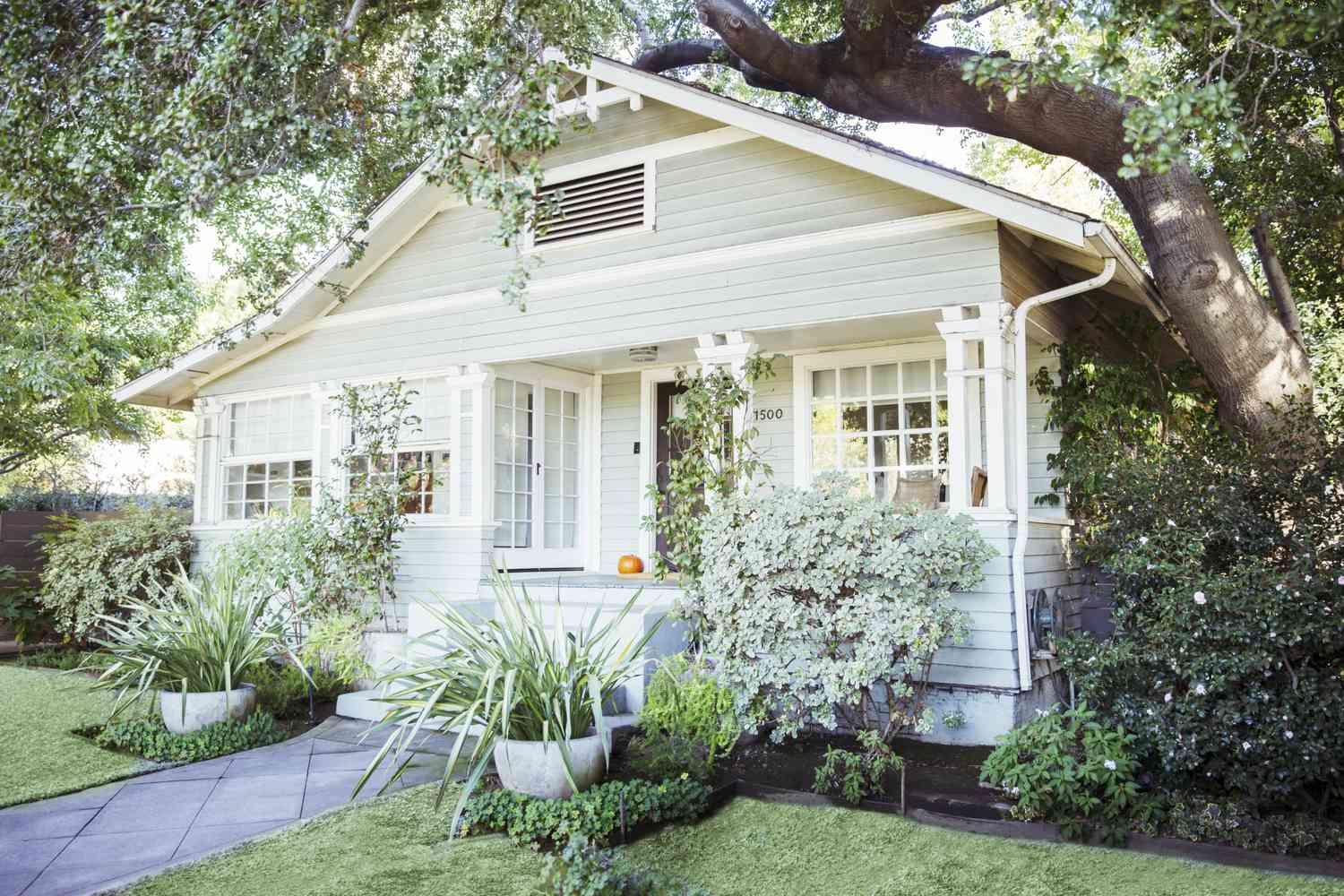
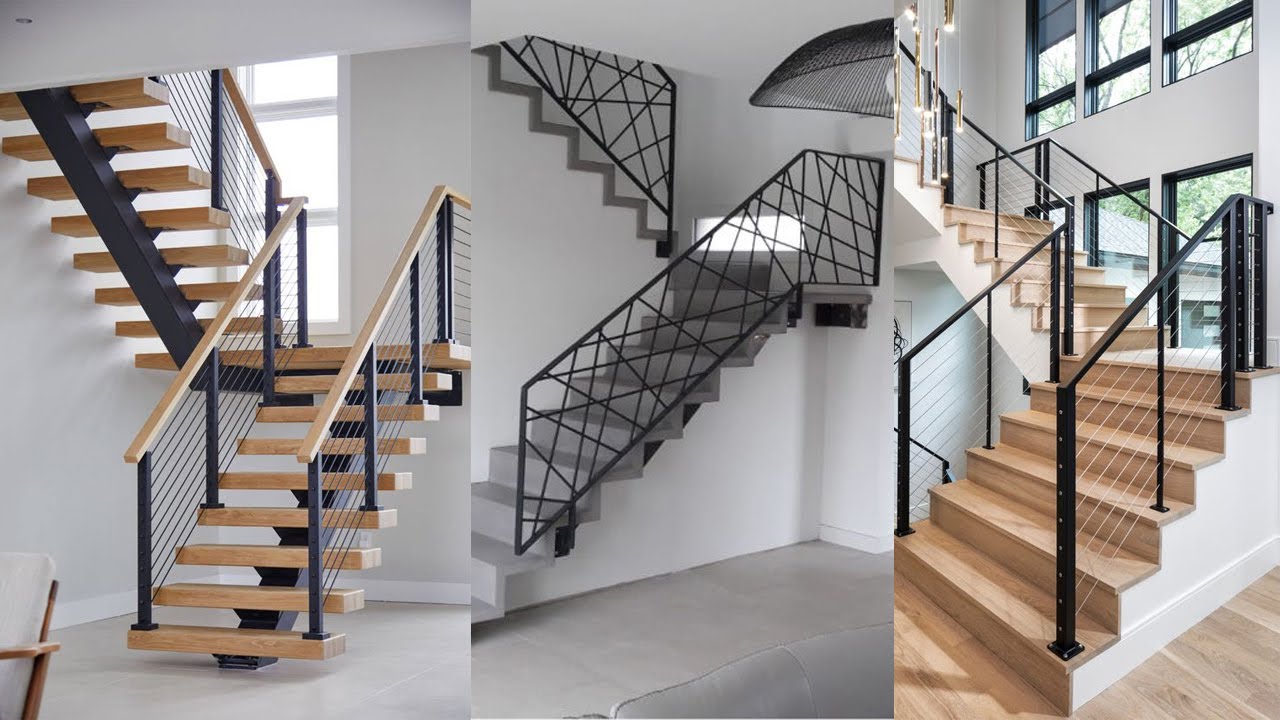
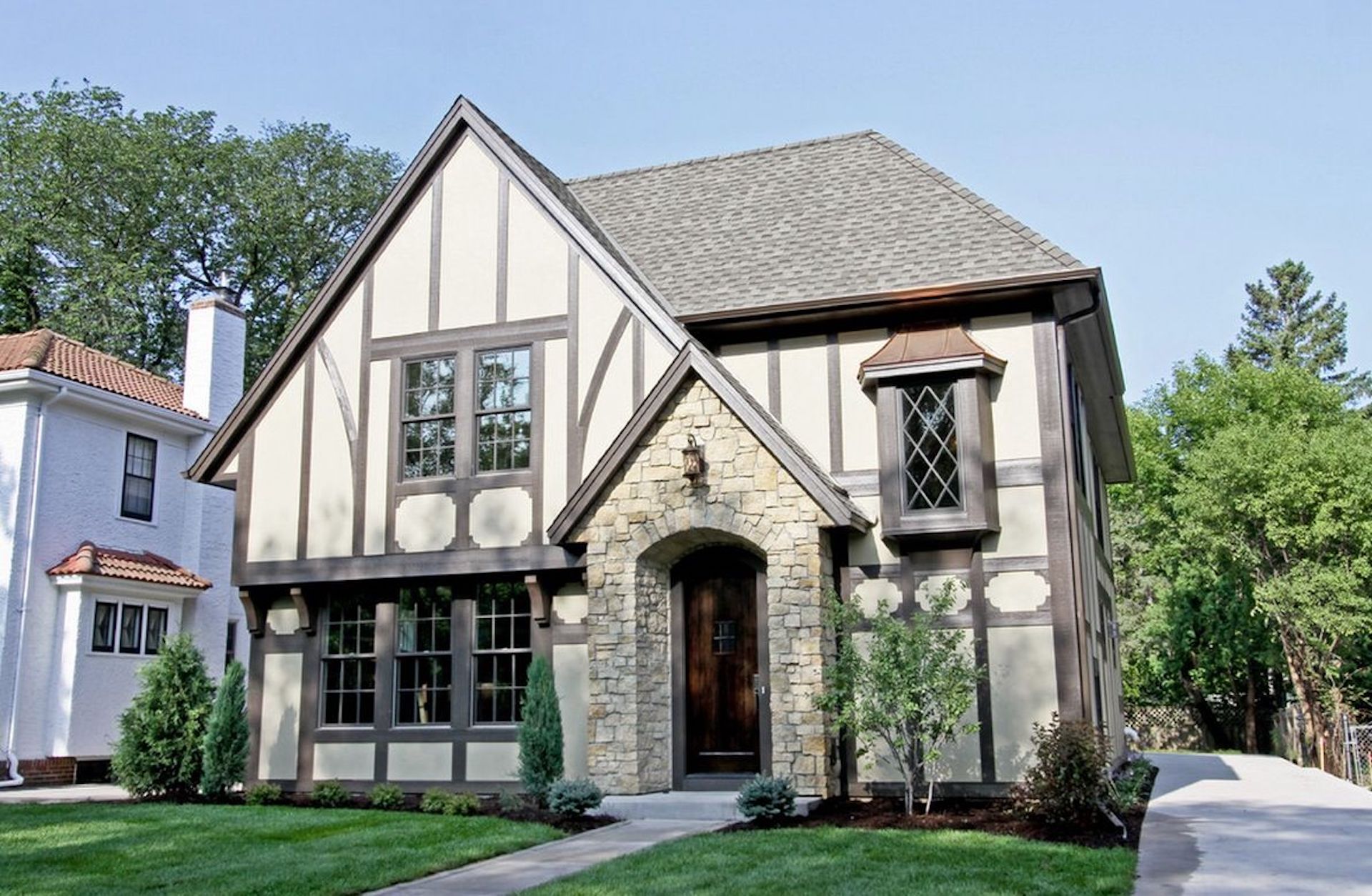

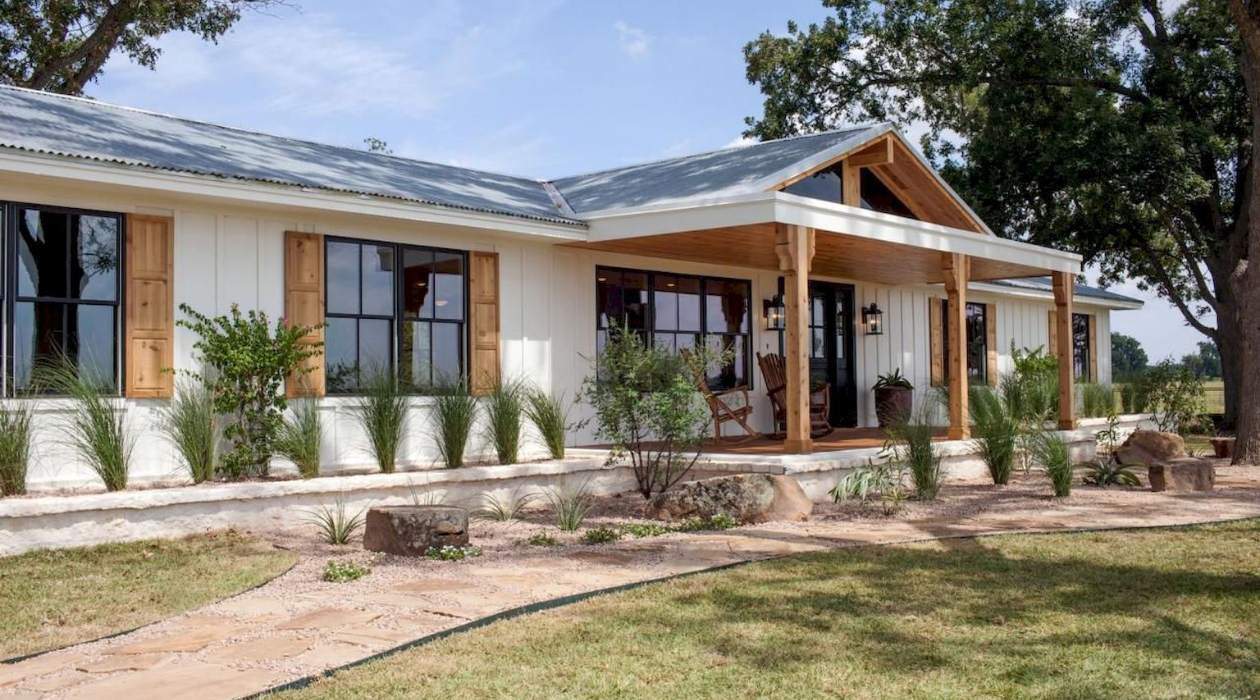
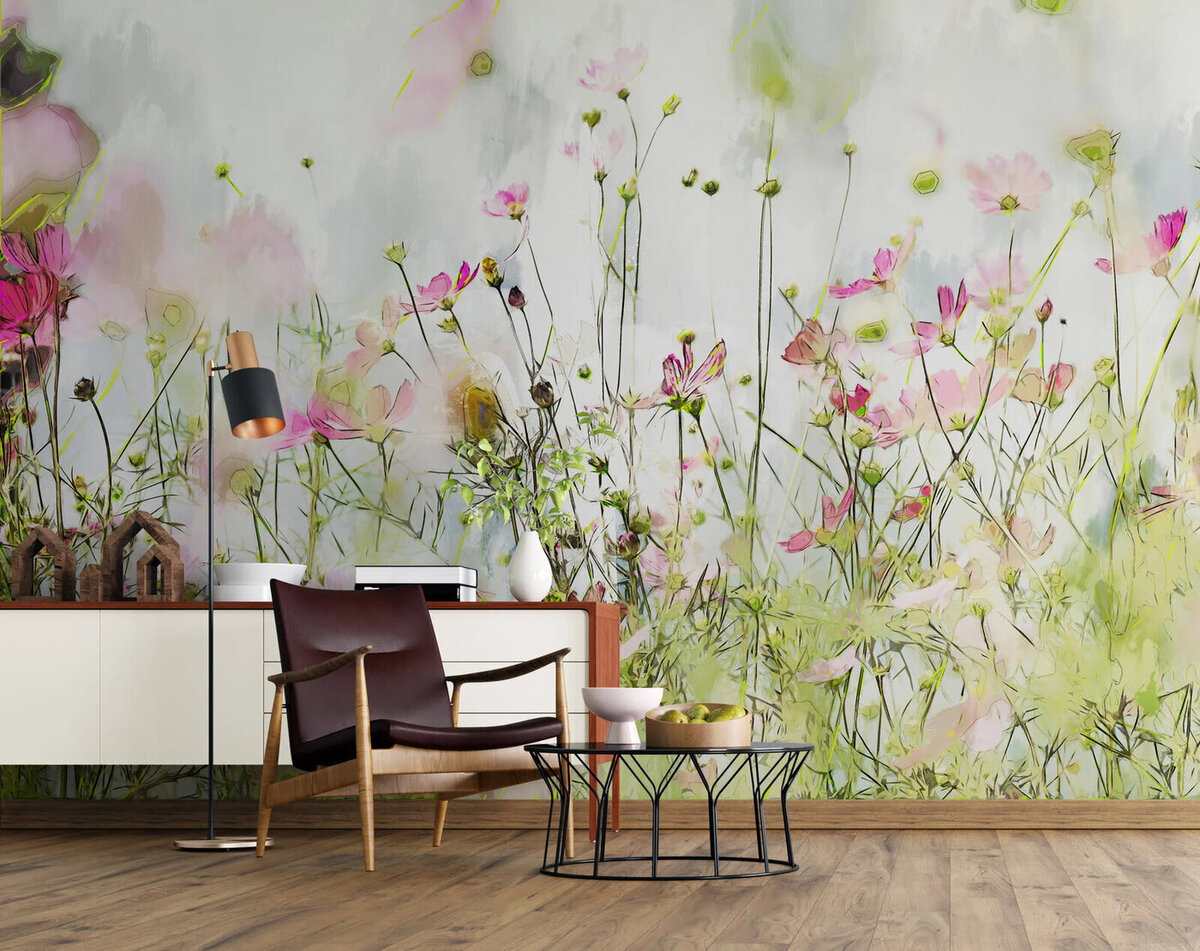

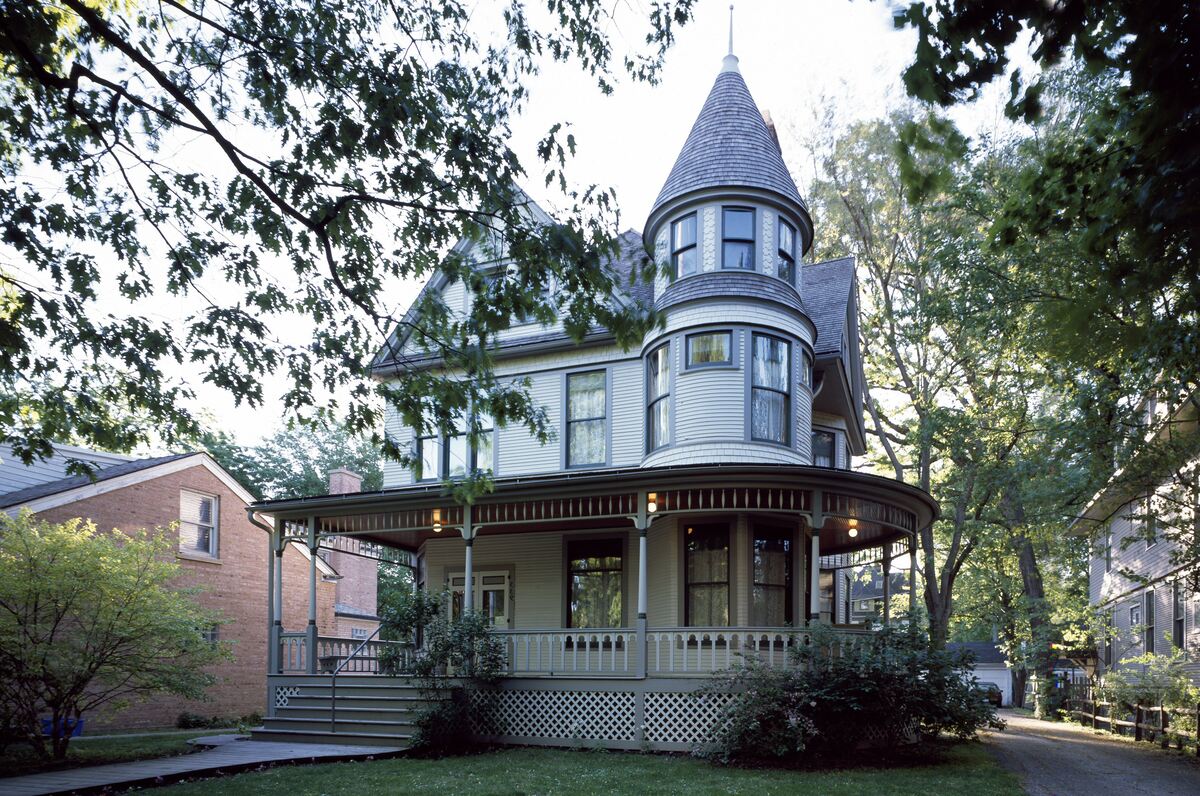

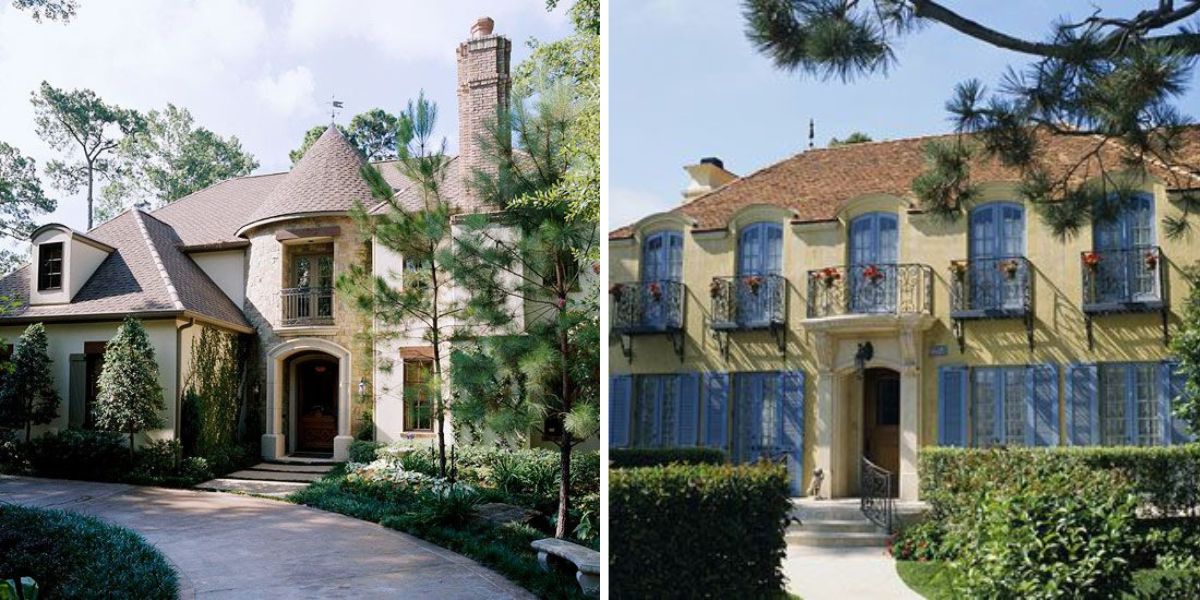


0 thoughts on “20 Craftsman-Style Homes With Timeless Charm”